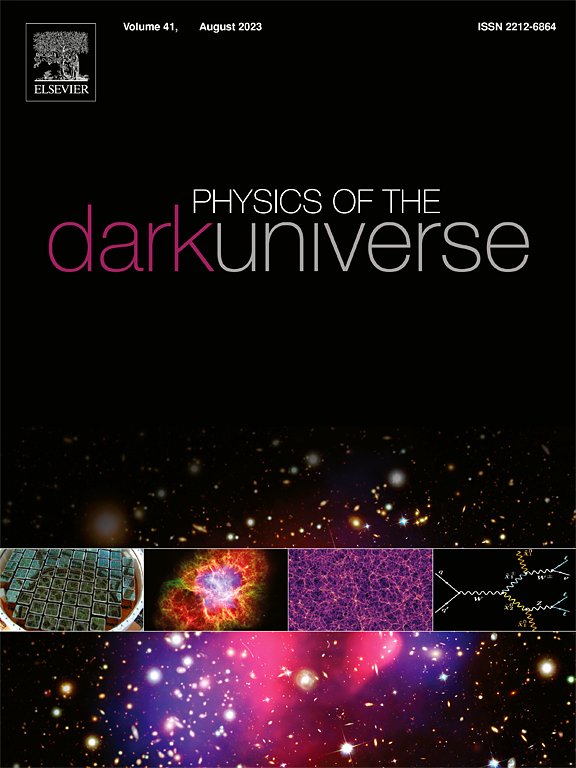Quasiperiodic oscillations around a Schwarzschild black hole surrounded by a Dehnen type dark matter halo
IF 5
2区 物理与天体物理
Q1 ASTRONOMY & ASTROPHYSICS
引用次数: 0
Abstract
In this paper, we investigate the properties of a Schwarzschild black hole (BH) immersed in a Dehnen-(1,4,0) type dark matter (DM) halo. We focus on analyzing the time-like geodesics of massive particles and their epicyclic motion around the Schwarzschild BH surrounded by a Dehnen-type DM halo. We further explore the impact of DM halo parameters on the particle trajectory and the innermost stable circular orbits (ISCOs). It is shown that the effect of the DM halo increases the radius of the ISCO and alters the nature of the particle trajectory, changing it from an escaping trajectory to a captured one. We derive a generic expression for the orbital velocity and epicyclic frequencies of particles moving in circular orbits around the BH. We show that an increase in DM halo parameters enhances orbital velocities and influences the frequencies of astrophysical quasi-periodic oscillations (QPOs). Interestingly, we find that radial oscillations decrease while latitudinal oscillations increase under the influence of the DM halo, leading to changes in the QPO characteristics. Finally, we compare our results with observational QPO data obtained from three selected galactic microquasars, “GRO J1655-40”, “GRS 1915+105”, and “XTE 1550-564” of X-ray binary systems to provide the best-fit constraints for the DM halo parameters by applying a Markov Chain Monte Carlo (MCMC) analysis.
求助全文
约1分钟内获得全文
求助全文
来源期刊

Physics of the Dark Universe
ASTRONOMY & ASTROPHYSICS-
CiteScore
9.60
自引率
7.30%
发文量
118
审稿时长
61 days
期刊介绍:
Physics of the Dark Universe is an innovative online-only journal that offers rapid publication of peer-reviewed, original research articles considered of high scientific impact.
The journal is focused on the understanding of Dark Matter, Dark Energy, Early Universe, gravitational waves and neutrinos, covering all theoretical, experimental and phenomenological aspects.
 求助内容:
求助内容: 应助结果提醒方式:
应助结果提醒方式:


